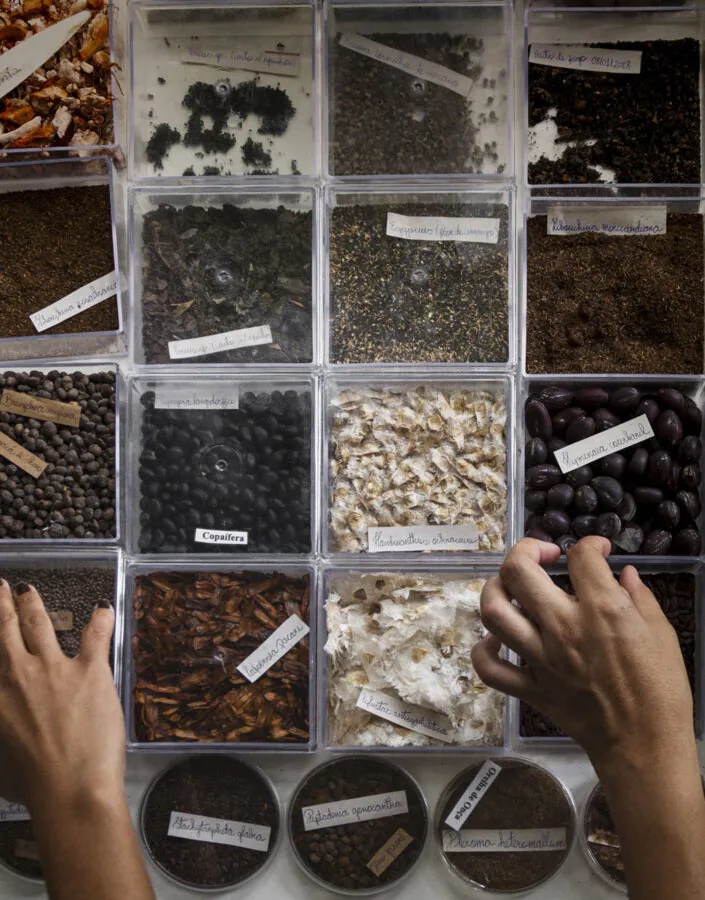Botanical Garden
Environmental Management
Sustainability is one of the main pillars of Inhotim, which works to preserve and manage hydric resources, the soil, as well as the surrounding fauna and flora, in actions that seek to minimize the impacts caused by the anthropical action.
Hydric Resources and Wastewater
Watercourses and springs are part of the landscape in Minas Gerais and, of course, Brumadinho. The Institute plays its role to preserve hydric resources. Water wells and reservoirs destined for irrigation are used for the water supply of the park. Moreover, Inhotim collects and treats 100% of the domestic effluents resulting from its activities in a Biological Wastewater Treatment Station of its own. Aiming at keeping the quality of hydric resources and wastewater treatment, samples of water and effluents are periodically collected to allow for physical and chemical monitoring.
Here, waters are classified between Human Consumption (potable) and Irrigation/Landscape Design, destined to maintain the ecological beauty and balance of the gardens and lakes of the Institute.
Solid Waste
In order to reduce environmental impacts, solid wastes are also properly handled by Inhotim, according to the Management Plan for Solid Wastes (PGRS, in Portuguese). Based on environmental laws, the plan establishes a rating according to the potential of polluting, recommending the handling of waste as follows:
- Class I wastes (dangerous) are stored separately, from where they are collected and transferred to an industrial landfill by a licensed company.
- Class II A wastes (non-inert) are stored, collected by the city hall, and destined to a landfill. Recyclable waste is destined to local associations of scavengers.
- Class II B wastes (inert) are mainly construction work debris stored in dumpsters and sent to the city landfill.
Compost
The maintenance of gardens generates around 100 m³/month of organic solid waste. All these material proceeds to compost within the premises of Inhotim, thus being reincorporated to the environment and contributing to enhancing the soil. 0.8 m³/month of raw vegetables coming from the restaurants of Inhotim are also part of the composting process.
Fauna
Inhotim is also home to a wide range of wild animals in search of shelter, food, water, and partners to reproduce both in the gardens and the Private Reserve.
The seriema (Cariama cristata), the mico-estrela or black-tufted marmoset (Callithrix penicillata), the caxinguelê or Brazilian squirrel (Sciurus aestuans), the jacupemba or rusty-margined guan (Penelope superciliaris) are some of the animals one can easily spot by the gardens.
Wild animals live in freedom at Inhotim and must not be touched or fed by the public. Respect the periods of reproduction: do not touch nests and shelters, nor approach the offspring.


